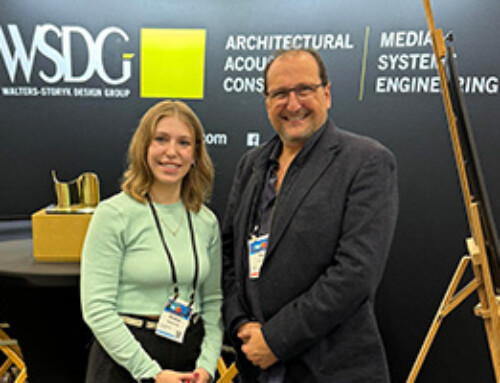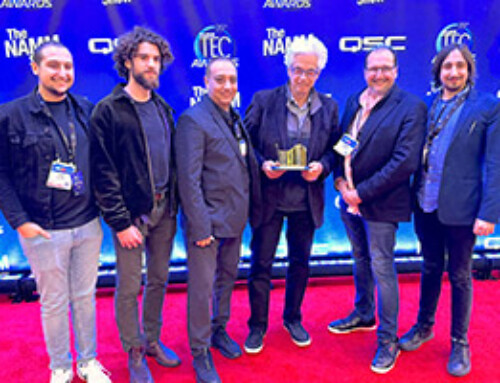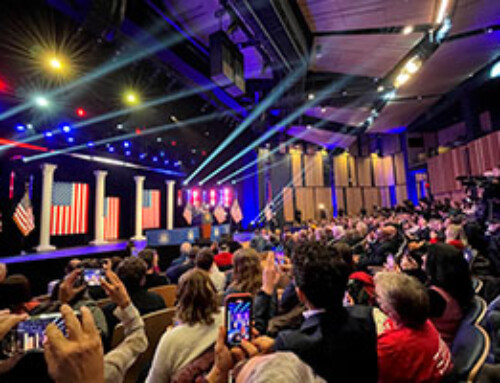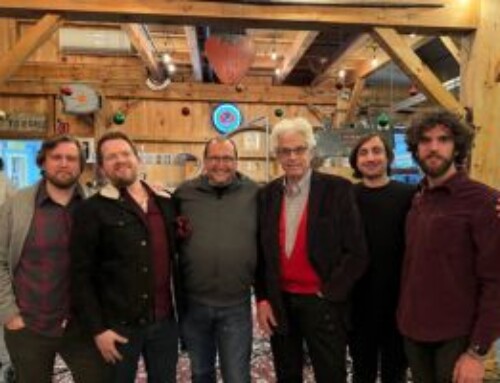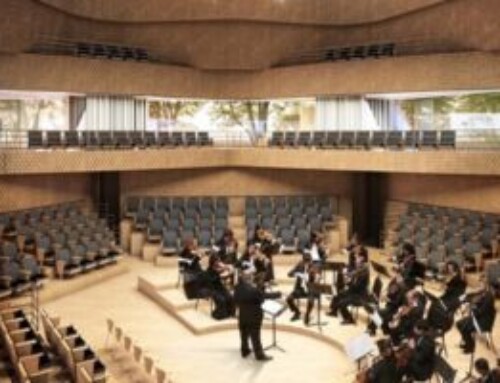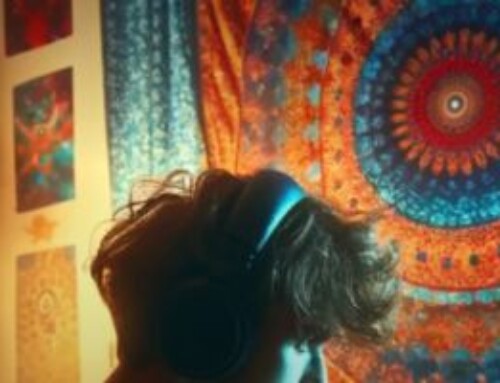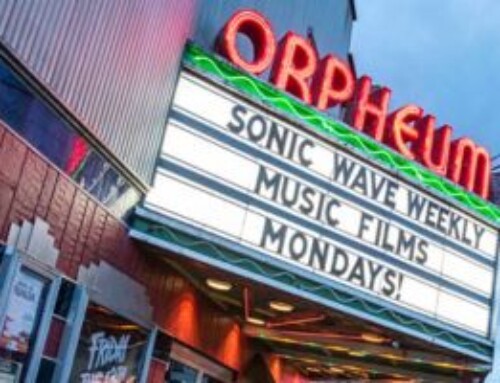Atlanta, Georgia, USA: “The ‘wow’ factor is fairly high,” admits Michael Rachap, founder of The Readeez Company, acknowledging a visitor’s reaction to the just-completed AV facility which also serves as his home. Situated in Atlanta’s booming Midtown, adjacent to the city’s Piedmont Park, the studio blends historic ambience with eye-popping innovation.
Renovations to the company’s loft in the 80-year-old building began in 2005. This included having a new main floor laid atop the original one, with a layer of sound-damping material between, as well as installing all-new mahogany doors and windows. Also implemented was a wiring topology that runs gigabit Ethernet and fibre channel throughout the house, plus an overhead conduit to escort cabling between the control room and a server closet that lives beneath the stairs.
What Goes Around
One of the studio’s more prominent innovations sits at the center of the Big Room. It’s a rotating platform nearly 11 feet across, upon which rest three red-velvet theater seats, late of New York’s Radio City Music Hall. The platform, dubbed the “Wheel of Amusement,” is motorized, and can be controlled wirelessly, along with the home’s other automated systems. Either the theater chairs or the VCC (Very Comfy Couch) or both can be turned at a viewer’s whim to face a floor-to-ceiling bookcase which parts to reveal a 61-inch plasma display, flanked by an imposing pair of Genelec 1038B speakers. Also housed within the 14-foot-high mahogany casework are the thousands of books, LPs, cassettes, DVDs, videotapes, minidiscs, CDs, software and other media which are among The Readeez Company’s principal assets. “People ask me what we do and it’s tough to give a simple answer,” says Rachap, who began the work which evolved into Readeez more than four years ago. “Lately I say ‘We make short films for small people.'” The company business plan includes producing and marketing hundreds of such films, on a broad array of topics, for children of all ages.
Audio quality is crucial to the success of Readeez in its approach of using multisensory input to impart reading skills. “The sound component of so much online video seems like an afterthought,” says Michael. “It’s the first place producers skimp to conserve bandwidth. You end up with videos that are only a few megabytes but they use 8-bit/22K audio or worse, and they sound terrible.” Readeez videos are provided commercial-free on the Internet at CD-standard 16/44.1, and the company plans higher bit- and sample-rates for its DVD releases.
Dome-esticity
“The acoustics of this place are fascinating,” says WSDG’s John Storyk. “The 18-foot ceiling of the Big Room is gently domed — evidently the space enjoyed a previous incarnation as a ballroom. The result is a natural reverberation that imparts a sonic signature. I’ve not heard anything quite like it.” The control room presented Storyk with his biggest challenge. Space was at a premium — just over 160 square feet were available at the outset. “We stole some space from the Big Room, creating a sort of bay window that brings the mix position out amongst the players.” Isolation was also an issue. “There are neighbors below and next door so we built a room within a room. It may not be as quiet as a purpose-built studio, but you can definitely mix there with confidence.” Rachap also uses the control room as an iso booth, recording narration and other program material.
Music, Maestros
In addition to animating, filming and producing audio for Readeez, the Kitchen also serves as a first-rate music room. Rachap’s band, The Omnivores, has been using the space as a practice facility for more than a year. Says bandmember Casey McCann, “We’re a trio but we play much bigger. We’re all multi-instrumentalists and we all sing. It’s a blast of a band.” Adds Omnivore Mike McGill, “The first time we did ‘Creeque Alley’ [the harmony-filled song by The Mamas and The Papas] we knew we had something special. Plus, this is a pretty swank room to jam in.” The band plans to record an album of original material at the studio in 2008.
Atlanta’s chart-topping R&B community also has the facility on its radar. “I’ve let an engineer friend mix some hip-hop sessions here, but there just aren’t enough hours in the day, so I guard studio time jealously,” says Michael.
Fab Gear
A trove of instruments old and new litters the premises. But the star is clearly the 6’1″ satin-finish Yamaha grand, outfitted with the company’s versatile Disklavier system. This MIDI capability is used to amusing effect in the Readee for the song ‘Indescribable’ [http://www.readeez.com/?p=24]. Rachap, who studied Music Production & Engineering as well as Songwriting at Boston’s Berklee College of Music, says “My fantasy is that one day Elton John will pop round and play my piano — he lives a couple miles from here. He’s a Yamaha guy, right?”
As to the studio’s recording rig: Principal converters are Prism Sound’s Dream ADA-8XR, routing high-def audio to and from Pro Tools HD at sample rates up to 192K. A 24-fader ICON D-Command unit anchors the control room, framed by a pair of Genelec 8050s, with a Bryston amp sending signal to the Big Room.
Outboard equipment includes two API Lunch Boxes, one that floats around the house and one tethered to the control room’s patch bay. A Summit DCL-200 Compressor Limiter and TC-Helicon VoicePro are also hardwired to the 96-point bay. The big guns of the microphone arsenal are two Neumann U87s procured from a local Guitar Center. Mics by Sennheiser, Shure and AKG round out the cabinet.
Recipe for Success
Most of the animating work for Readeez takes place in the studio’s eponymous kitchen. An 8-processor Mac Pro, packed with over two terabytes of on-board storage, sends audio through one of the home’s four Digi 002 interfaces. Genelec 8040s, a Dave Smith Poly Evolver synth and several tons of virtual instruments complete this tasty setup.
Flexibility is the hallmark of the complex. “I work in different rooms throughout the day,” says Rachap, “bouncing from machine to machine so it always feels fresh.” Audio tie lines to the two upstairs bedrooms, plus fast network connections, allow the entire house to function as a seamless creative tool. “The place doesn’t look the same from one day to the next,” Michael explains. “It was hard getting it to hold still long enough to take its picture.”
Futurama
“At WSDG, we see this sort of facility as the direction things are headed,” says John Storyk. “With technology now available, artists and producers have a viable alternative to big commercial rooms. Plus, it’s like you’ve got a permanent lock-out. You don’t have to fight other clients for a shot at the midnight-to-six a.m. slot in Studio C. You can record when you like.”
Of course, gear alone doesn’t guarantee a winning studio. “We absolutely could not have done this without Walters-Storyk,” says Michael. The chance to work with John Storyk was, all clichés aside, a dream come true. I’ve been a studio rat most of my life, in bands and in radio production, so the first person I thought of when the time came to build this place was John. The experience and creativity he brought to the table were inspiring.”
Michael continues, “I’m truly grateful to the people who did such a brilliant job putting this playground together.” The team included WSDG’s John Storyk and Judy Elliot Brown; Atlanta’s Wisdom Properties (construction); Comprehensive Technical Group; Atlanta Pro Audio; and Audio, Automation & Theater.
“I give Michael credit for envisioning what he wanted this space to be and making that a reality,” says Storyk. “He has a lot of good ideas. It’ll be interesting to see what gets produced here.”
Visit WSDG project page

